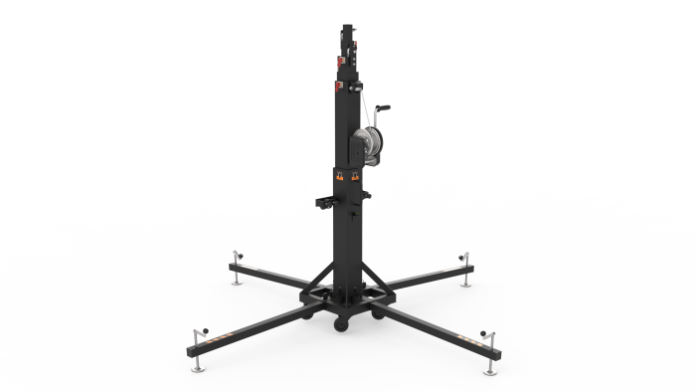When did you begin developing LoadSense?
“LoadSense began as a result of our commitment to safety in the manufacturing and research and development processes of our products. We have always made it a priority to ensure that our products are safe to use, and LoadSense is just one example of the work that our engineering department performs to ensure the safety of our customers.
“The initial goal of LoadSense was to provide a simple way to monitor the weight supported by the top loading towers during their use and to alert users when an overload condition was detected, to prevent accidents. We are proud to have developed this innovative technology, and we believe that it will become an essential tool for Lifters Towers.
“We know that most telescopic lifters are used to the point of being overloaded and this is a problem in our industry. In fact, the new European regulation prEN17206-2 includes a requirement that lifters must have an overload alert system to warn users. We’ve achieved this with LoadSense.”
How important is the mechanical aspect of the system?
“Our initial aim was to develop a mechanical solution that could be integrated into the top loading tower itself, without requiring any electrical power or any type of connection – even wireless. LoadSense is a mechanical component of the tower, designed to provide a reliable way to monitor the load supported by the top loading towers. An easy-to-read load indicator located above the winch shows the weight supported on a graphical scale and indicates the overload point. It does not require any additional power or connections, making it easy to use and maintain.”
How is LoadSense able to integrate into pre-existing product lines?
“LoadSense will be available as a standard feature on our newest product lines. We are actively working to make sure that all our top loading towers will incorporate LoadSense as a standard feature soon. However, it’s worth noting that LoadSense is a structural element of the tower, which means that it cannot be retrofitted to earlier tower models but we have solutions coming soon for older lifters.”
How important are the safety mechanisms built into LoadSense?
“At FANTEK, we are committed to providing our customers with the highest level of safety and quality in all our products, including trusses, stages, front and top loading towers, and LED screen supports.
“Overloading is one of the most concerning issues for us and for our most important product lines we saw the need of the users to be aware of how much load they were managing as sometimes they might apply a load to the lifter without measuring or knowing the total weight. We believe that safety should be a top priority in the entertainment industry, and we take this responsibility very seriously. That’s why we have made the development of LoadSense a priority.
“We believe that inbuilt safety mechanisms are essential in ensuring that our products perform as intended and can withstand the rigours of live events. We understand that the safety of the people involved in these events, as well as the equipment used, is paramount, and we strive to meet and exceed the industry standards. Safety is not just a buzzword for us – it’s an integral part of our company’s DNA, and we are constantly looking for new ways to improve the safety and reliability of our products.”
What feedback have you received from visitors and the sector at large?
“We were very pleased with the feedback we received from visitors at Prolight + Sound. The response was overwhelmingly positive, and we were delighted to see so many people interested in our latest innovation. We believe that the positive response is in part due to the fact that top loading towers are not a product that sees frequent innovations. LoadSense represents a significant step forward in the safety of top loading towers, and we were pleased to see that so many visitors recognised this fact.”
This article originally appeared in issue #275 of TPi, which you can read here.






